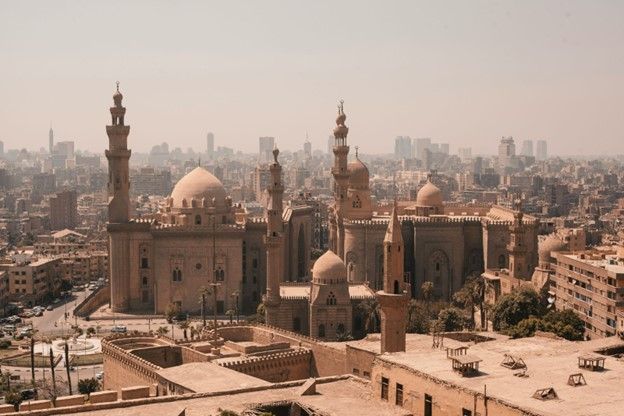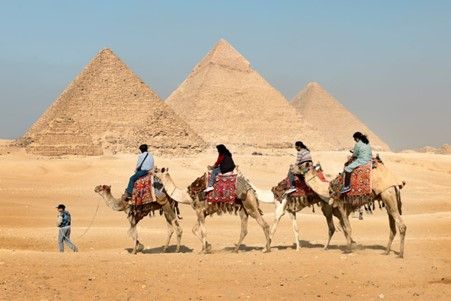Colossi of Memnon
The Colossi of Memnonia were carved in stone during the reign of Pharaoh Amenhotep III (1400 BC). The statues depict Amenhotep III standing on his throne, flanked by two figures representing the gods Thoth and Amun. They stand at the entrance of the temple of Amon-Re in Thebes, Egypt.
When was the Colossi of Memnon built?
The Colossi of Memnon was believed to have been built sometime in the 14th century BC by the ancient Egyptians. Some scholars believe that they served as a funerary monument, memorializing the pharaoh Amenhotep III, who reigned during this period. However, others suggest that they may have been built at a later date, possibly even during the time of Cleopatra, as a tribute to her and her predecessor. At any rate, these majestic statues have stood tall against the sands of time for hundreds of years, offering a fascinating glimpse into ancient Egyptian culture and art. Whether you are studying history or simply admiring its beauty, the Colossi of Memnon's long-lasting legacy is no denying.
Where is the Colossi of Memnon located?
The Colossi of Memnon are two massive stone statues located in the ancient city of Thebes, (Luxor) Egypt. The Colossi were constructed circa 1350 BCE, and they depict the Pharaoh Amenhotep III seated on his throne. For centuries, the Colossi stood at Amenhotep's mortuary temple entrance, greeting visitors with their imposing size and grandeur. However, by the time of the Roman Empire, the Colossi had fallen into ruin. Today, the Colossi of Memnon are among Egypt's most popular tourist attractions, drawing thousands of visitors each year. Although they are weather-worn and battered, the Colossi still convey a sense of the mighty power and splendor of the ancient Egyptian civilization.
Why was the Colossi of Memnon built?
What does the Colossi of Memnon represent?
The Colossi were erected as part of an attempt to commemorate Amenhotep III's military victories. He had conquered Nubia, Syria, Palestine, and Canaan. His name means "the living image," He was considered a god-king.
Where did it come from?
The colossi of Memnon were carved out of sandstone and limestone quarried from the cliffs of the Nile River. It was originally thought that the statues had been made by the Pharaoh Amenhotep III (c. 1390–1352 BC) as part of his tomb complex. However, recent research has shown that the statues were carved during the reign of Amenhotep II (c. 1386–1353 BC).
Why is it called Colossi of Memnon?
The northern Colossus was damaged during a quake in 27 BC, collapsing from the waist down and cracking the lower half. The northern colossus's remains began to "sing" an hour or two before sunrise, just as the sky brightened.
The sound was most often heard in February or March when people were said to go to the statues. According to the Greek historian and geographer Strabo, who listened to the sound on his visit to the Colossi of Memnon in 20 BC, it was a "blow."
The “Vocal Memnon” has brought good fortune to those who heard its strange tones. This story was passed outside Egypt, attracting many foreign tourists, including several Roman Emperors. They came in search of the oracle's blessing.
Although several individuals throughout history and up to the present have attempted to dispel the "Vocal Memnon," no explanation has yet been verified. They continue to be a mystery of ancient Egyptian civilization.
Conclusion
In conclusion, this monument has been around since the beginning of recorded history, and it still stands today.
The colossi of Memnon are two massive statues of Amenhotep III, each weighing approximately 70 tons. They stand at the entrance to his tomb, discovered in 1881. It is located near Luxor,










